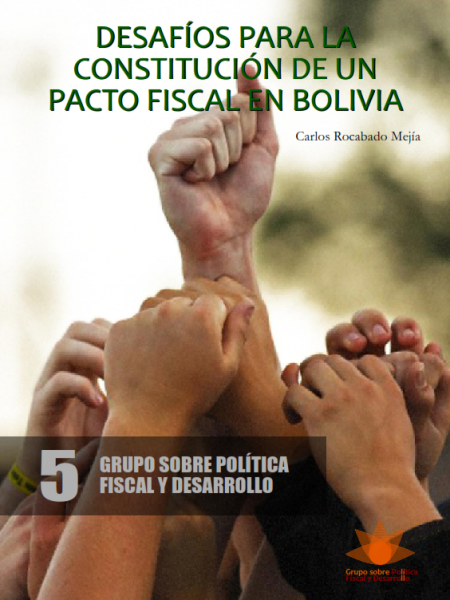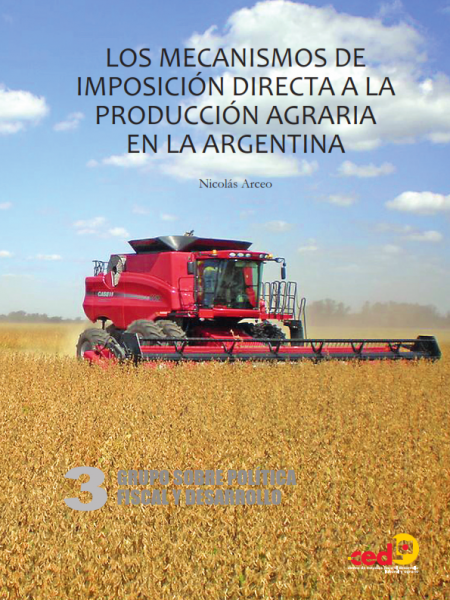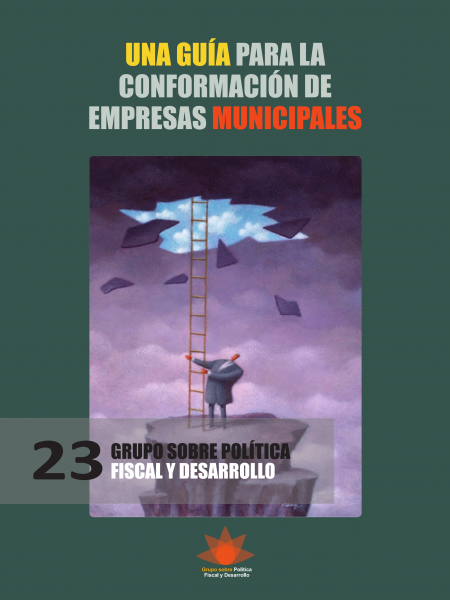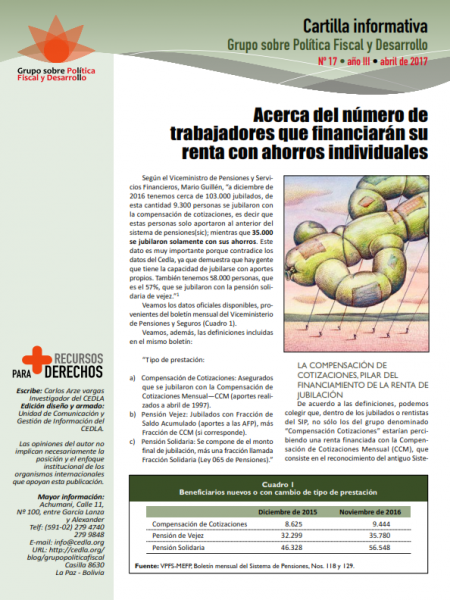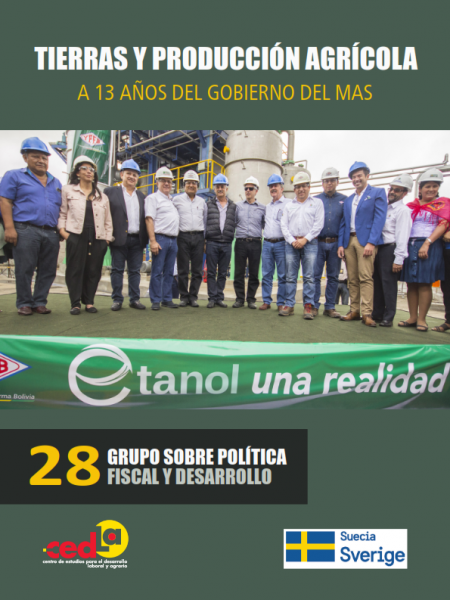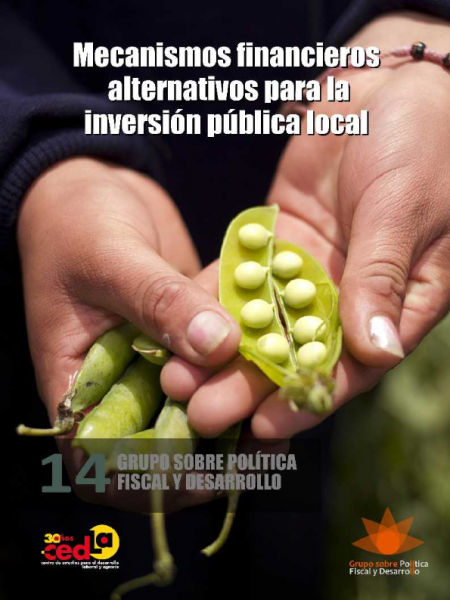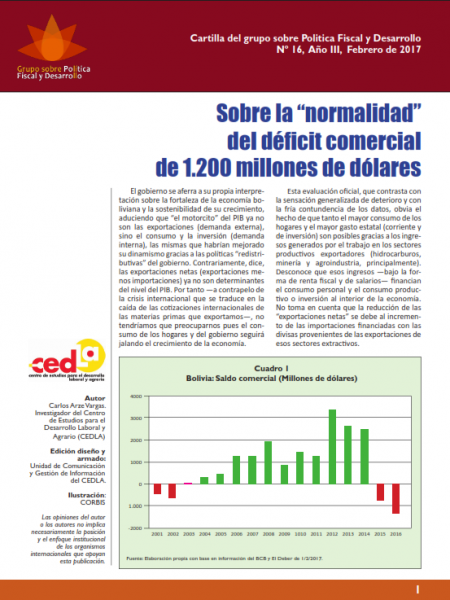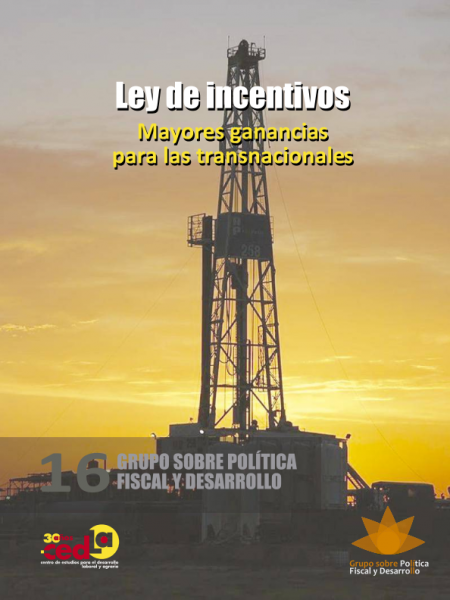Rebellion’s Economic Roots: The Consequences of Neoliberal Reform
- Descripción
- Información adicional
Descripción
The year 2003 marked a dramatic point in Bolivia’s recent history. In January, February, and then again in September and October, the country was rocked by massive social upheaval. In January, Bolivians widely expressed their ongoing rejection of the U.S. government’s unilateral imposition of drug control policies. The following month, riots erupted throughout the country against an International Monetary Fundimposed tax hike. The most recent nationwide rebellion stemmed from the lack of a sovereign political voice or democratic consultation on the destiny of a strategic resource: the country’s natural gas reserves. The nominally democratic government of the time responded to all these upheavals with violent repression. The second administration of thenPresident Gonzalo Sánchez de Lozada, which was ultimately evicted in October by the popular revolt, killed more people in 14 months than did Gen. Hugo Bánzer’s sevenyear military dictatorship.[1]
The prevailing economic conditions in Bolivia, largely the product of economic and governmental reforms begun in the 1980’s, provided much fuel for the social explosions of 2003. Government restructuring, associated changes in tax policy, trade liberalization, modifications to the country’s productive and industrial base, and the abandonment of the internal market have combined to drastically undermine the material wellbeing of most Bolivians.
Two consequences of reform have been especially harmful to the majority of Bolivians: the devastation wrought by commercial openness on smallscale campesino and indigenous agricultural production, and the increasing precariousness of the world of work in which growing social divisions are systematically reflected and produced. Both consequences involve the daily and unpunished violation of individual and collective rights. Both are indicative of the way in which the current “growth model” produces lasting and increasing social and economic inequalities and insecurity—the foundations for the uprisings and violence of 2003. Indeed, neoliberal reform has hit Bolivia harder and deeper than other countries. The ambitious programs and practices of the Revolution of 1952—nationalization of the large strategic mining sectors, land reform, universal suffrage, ambitious universal education and a populist/corporatist approach to politics—produced what is locally termed “el Estado del ’52” (“the State of ’52”). It was a state with vast reach, playing a central role not only in capital formation and allocation but also employment. It was a provider of services and the focus of social demands, making itself present as never before in people’s daily lives and the agendas of social struggle. Undoing the State of ’52 was especially traumatic. Ironically, it was one of its original architects, Víctor Paz Estenssoro, who engineered its demise in 1985.
Like other countries of the region, in the 1980s Bolivia emerged from a period of dictatorial rule loaded with unmanageable debt. A slew of compounding problems made a bad situation worse: a climatic crisis in highland agriculture, plummeting tin prices and the government’s inability to collect revenue while being held to unsustainable social expenditures. The result was spiraling hyperinflation. This particularly devastated the finances of the urban working classes, whose meager savings were wiped out overnight. Estenssoro played on this traumatic experience to gain and sustain support for the neoliberal reforms forcefully backed by creditors that he touted as the country’s only solution (a strategy also used by Sánchez de Lozada to garner votes in 2002). The government secured the reforms with the use of targeted repression—dozens of opposition leaders were flown to internal exile in remote provinces.
Reforms removed the state from all economic activity, causing a precipitous fall in employment through the closure or breakup and sellingoff of uncompetitive productive enterprises and the laying off of low to midlevel bureaucrats. This reduction of the government apparatus aimed to reduce the fiscal deficit and to minimize state interference in the finances of private enterprises. It also led to the insolvency of the state, which, having relinquished its former revenuegenerating enterprises, was forced to reduce regular spending, including on social needs such as health, education and housing. Many public services ceased to be universally available. The deterioration of these services helped shore up the government’s argument for, and the public’s support for, their gradual privatization.
Supreme Decree 21060, promulgated in 1985, included several measures to reduce employment. It obligated public entities to “rationalize” their personnel and strongly encouraged the voluntary retirement of their employees. It also broke up many major public enterprises, including the Bolivian Mining Corporation (COMIBOL). Later government acts would reinforce these orders, resulting in the mass sacking of government workers, a process euphemistically described as “relocation.” COMIBOL, for example, reduced its workforce by more than 20,000. In 1997, “capitalization”—privatization by another name—of several important existing public enterprises produced new contingents of unemployed from the energy, transport, hydrocarbon and telecommunication sectors, among others. In this way, the state definitively abandoned its role as the country’s principal employer. From then onward, it has attempted to relieve high unemployment only by carrying out emergency programs of insignificant impact.
Loss of income owing to the closure or privatization of public enterprises and the high financing costs associated with these reforms left the government in a state of permanent insolvency. To close the fiscal breach, it imposed a severe tax reform that has been in place since 1987. This tax policy has also affected social conditions by reducing individuals’ disposable income.
Prior to the imposition of the neoliberal model, the tax burden—taxes as a percentage of GNP—reached an annual average of 5.6%. In recent years, it has come to represent 14.2%. But more than increasing in absolute terms, the tax base also changed in structure—for the worse. Before neoliberal adjustment, the state’s revenue from taxes mainly derived from taxes on incomes and profits, which represented an average of 69% of the total. But from the end of the 1980s until today, 77% comes from taxes on consumption, which, as is well known, proportionally weigh more heavily on the poor.
On the expenditure side of the state balance sheet, social spending showed only a moderate increase of 32% in absolute terms, rising from 5.05% to 6.25% of GNP during the first decade of neoliberal reform. This restraint was due to fiscal policies established by agreements with international organizations and the loss of income from privatizations. From 1997 to 2002, social spending substantially increased (from just over 6% of GNP to slightly more than 12%), but financing this increase over the same period was an equivalent increase in taxes on consumption (from 6.7% of GNP to 13.9%). In other words, much of the financing for governmentsponsored social services came from the part of the population that could least afford to provide it.
In dogmatic compliance with the marketbased economic prescriptions of the Washington Consensus, the Bolivian government introduced a series of broader economic structural reforms. Some aimed to achieve monetary stability following the period of disastrous hyperinflation in 1984 and 1985. Others aggressively pursued market liberalization and commercial openness.
The World Trade Organization considers Bolivia one of the countries in the region most open to imports. From very early on, its neoliberal program eliminated all barriers protecting national industries and indiscriminately admitted commodities from abroad. In 1985, Supreme Decree 21060 replaced customs tariffs on all products with a general charge of 10%, plus a mere 10% of the previously existing specific tariff. In most cases, this resulted in rockbottom rates by international standards. The decree also eliminated all limits on imports and the government later established a preferential 5% tariff on incoming capital goods.
The impact of these reforms on industry was severe. Because Bolivia’s national industry was still extremely weak in the mid20th century, from the late 1950s the government nursed its incipient development with protective policies. After 1985, reforms subjected these industries to greater competition from other more industrially advanced countries. Theoretically, this would “discipline” these national industries and render them more efficient.
According to a recent study by the La Pazbased nongovernmental Center for Labor and Agrarian Development Studies (CEDLA), the trajectory of Bolivian industry over the last 20 years belies the supposed virtues of open market policies.[2] Bolivian industry continues to have a limited role in the national economy; its contribution hovers around 17% of GNP. Its contribution to national exports, from the early 1980s until today, remains at barely 15%. Moreover, what little industry there is can only be classified as “light,” since it continues to be concentrated in the production of consumer goods.[3] Also telling of Bolivia’s scanty global productivity is the high number of tiny (micro) and small establishments (under 10 workers). These represent 95% of the country’s total industrial units and account for 49.5% of industrial employment. Even more worrying is the fact that privately owned and family enterprises increasingly account for a greater portion of industrial employment—from 61% at the end of the 1980s to almost 73% in the late 1990s.
All these data indicate that uncompetitive national industry has stagnated. In response, enterprises are choosing to confront foreign competition by squeezing labor actively at the micro level, through union busting and the like. Successive governments have allowed and/or promoted these worsening labor relations. The highly vaunted and microfinanced “informal” enterprises—including a large part of the privately owned and, above all, family operations— are governed precisely by working conditions alien to any regulation or state law. Large and mediumsized enterprises have also chosen to squeeze labor to keep afloat in the market. Recent research affirms that a “defensive” strategy prevails among such companies, meaning that their competitiveness is not based on the modernization of productive processes, but rather on the reduction of wage costs. According to the CEDLA report, this deficiency has not allowed Bolivian industries to “reduce the technological gap separating them from their foreign competitors. Instead, they have deepened the exploitation of their employees and, by lowering workers’ salaries, have limited the development of the internal market on which the sector’s growth depends.”[4]
The “capitalization” of state enterprises, Bolivia’s unique brand of privatization, dealt a severe blow to the national economy and the Bolivian state. Control over most of the country’s economic surplus passed into the hands of foreign investors without producing new income for public coffers. The argument for capitalization projected increasing profits, based on the assumption that private foreign entrepreneurs, who took a 50% interest in the companies and managerial control, would make better managers than government bureaucrats. In theory, the state would gain more income through the dividends generated by the company run by the private coowners. The private enterprises, however, proved adept at “creative accounting” and other less than transparent practices, which meant that the expected dividends somehow failed to appear. This transfer of state patrimony was based on a unique form of “association” between the state and foreign investors. Proceeds from the purchase of 50% of shares “capitalized” the companies, doubling the initial value of each enterprise beyond the 50% of shares retained by the state. These latter shares were handed over to Pension Fund Administrators (AFPs), foreign financial companies that manage a fund that pays out a subsidy called “Bonosol” to citizens over 65. The AFPs also act as “representatives” of the Bolivian citizenry on the boards of the privatized companies. The administration of the companies was left to the capitalist partners, leaving the state practically without influence and reorienting the companies toward the pursuit of private profit rather than social or political ends.
Privatization solidified the national economy’s schizophrenic nature. It split in two directions: One subeconomy produces for an internal market with minimal buying power. It employs a large part of the labor force and involves mainly national entities, from mediumsized businesses to “informal” independent producers, which are generally characterized by low levels of productivity and the use of outdated technology. The second subeconomy is composed of a much smaller number of very large, highly productive enterprises using upto date technology and producing for external markets that have high purchasing power, or for internal markets on the basis of service provision monopolies awarded by the state. These enterprises have few links with other domestic economic sectors and provide relatively insignificant employment. Indicative of this incongruous twotier economy is the growing disparity in labor productivity among different economic sectors. In 1997, agriculture, industry and construction registered only 5% to 12% of the productivity levels of sectors such as mines and quarries, electricity and water supply, and financial services.
Within this dichotomous pattern, Bolivia’s increasingly important hydrocarbon industry— especially its natural gas component—is becoming yet another economic enclave within a backward economy. Such enclaves have few links to the rest of the national economy, negligible positive effects on social conditions such as employment or wage levels, and have little to no impact on state finances given the enormous advantages awarded to multinational companies in the privatization process.
Privatization, as the imperative economic logic, also encroached upon the campesino and indigenous economies through the accelerated expropriation—legal and illegal, peaceful and violent—of the productive resources of these sectors, such as land and forests. Despite existing legislation that gives legal protection to certain lands, the government has actively found ways to sidestep these provisions. The Original Community Territory (TCO) law passed in the 1990s, for example, grants land titles to native communities. But Bolivian law defines “land” as only the agricultural soil layer, considered the first 12 inches below the surface. Anything below this level (like mineral or oil deposits) or in some instances above it (like water) comes under the jurisdiction of other legislation, such as the Mining Code or the Hydrocarbons Law, and the state can sell or lease exploitation rights over these resources to private companies.
The intensified subjection of land to market forces builds on an already distorted landholding pattern. According to an official 2000 government report, the distribution of landholdings is extremely unequal.[5] Seven percent of the landowners who benefited from land reform programs possess 87% of cultivable land, while the other 13% is shared by the remaining 93% of owners, who are campesinos. Moreover, 95% of the land held by large landowners is not in use. That is to say, half a century after the agrarian reform that aimed to abolish unproductive large estates, the latifundio remains like an ugly wound on the country.[6]
Bolivia’s campesino economy is the principal provider of products consumed in the internal market and provides a meager living to an important portion of the country’s population. Commercial liberalization, however, virtually bankrupted several farming and herding sectors, mainly in the western area of the country, because domestic producers were unable to compete with cheaper supplies from abroad. From 1985 to 2001, cheaper imports lowered the price of products from the eastern lowlands of the country by 60% and those from the western highlands by 30%. Domestically grown produce now accounts for much less of the internal market and even staples like potatoes, cassava, onions and rice have come to be supplied from abroad.[7] As a result, the annual value of agricultural imports substituting for national production has multiplied tenfold in the course of the neoliberal period, from $1 million in 1982 to $10 million in 2001. The imported products are mainly fruits and vegetables from Chile and Argentina, potatoes from Peru and cereals from Brazil and Argentina.[8]
This gradual and sustained liquidation of peasant production has led to an emptying of the countryside, especially in the altiplano (highland plateau). Rural migration to urban areas and neighboring countries has boomed. The most emblematic cases are the spectacular increase of indigenous campesino migrants to the city of El Alto and the equally dramatic increase of Bolivian emigration to Argentina.[9] These massive movements of people have redrawn the demographic map of Bolivia. From 1996 to 2001, the departments of La Paz, Oruro, Potosí, Chuquisaca and Beni—all except the last in the altiplano—registered a negative net migration rate: more people left these departments than established new residence in them. In other departments, mainly in the eastern lowlands, the opposite occurred.
A particularly perverse policy affecting campesinos is that concerning the eradication of coca leaf production. Due to the economic structural adjustment policies of the mid1980s, thousands of workers in search of better living conditions moved to the Chapare region, a tropical zone in the department of Cochabamba. The Chapare had already become the most important center of coca leaf production—largely to provide raw material for the cocaine trade. Migrants found an attractive source of income in coca production.
The pressure applied by successive U.S. administrations to completely eradicate this crop, whether via illconceived and halfhearted crop substitution programs or massive military actions, caused the loss of important economic resources and the destruction of thousands of jobs directly or indirectly linked to this agricultural activity. According to data from the government’s Economic Policy Analysis Unit (UDAPE), between 1997 and 2000 the country lost approximately $610 million due to the reduction in coca and cocaine production and some 59,000 related jobs.[10]
The flexibilization of the labor market, a central objective of the neoliberal agenda, took place subtly in Bolivia; the government never altered the principal labor law protecting workers. Initially, a regime of “free hiring and firing” was established in tandem with the monetary stabilization program begun in 1985. Although it did not formally violate the letter of the General Labor Law, the new neoliberal labor regime led to the massive and routine use of dismissal to reduce labor costs—an utter violation of the spirit of that law. Job security was thus eliminated in the context of growing unemployment, itself conducive to the violation of labor norms aimed at protecting employment.
More fundamentally, the structure of employment was radically modified. Public sector employment was more than halved. In one form or another, the government once provided jobs for a quarter of the employed population; now it does so for only 12%. Moreover, state employment is now basically limited to positions in public administration and services, whereas previously it included workers in productive sectors like the nationalized mining industry. The private sector, on the other hand, has been persistently incapable of creating jobs to compensate for the fall in government employment, despite expectations to the contrary. The most dynamic sector of private business is linked to foreign investment and uses capitalintensive technologies. These few businesses generate no substantial demand for labor. Meanwhile, the growth of the socalled informal sector has been extraordinary and sustained, fed by ruraltourban migration in addition to general urban employment trends. In the 1990s the informal sector came to employ more than 65% of the working urban population and generated almost nine of every 10 new jobs in the country.
The challenges of survival in bolivia are dramatic and growing. In the countryside, the productive base of communities has been undercut by an influx of unlimited lowerpriced food imports. In the cities, families have to mobilize more of their members from an earlier age to work harder in unprotected circumstances for relatively lower pay. Working harder, many barely manage to maintain themselves even at the same level of poverty. These widespread circumstances of crushing hardship imply the loss of rights and exclusion from economic and political citizenship for a majority of Bolivians. This reality underlies the recent rebellions.
The present government rhetorically questions central elements of neoliberal policy, but in practice vacillates between timid proposals and rapid retreats in the face of pressure from financial institutions, multinational companies and the U.S. Embassy. In a rhetorical recognition of the model’s economic and social failure, the current administration talks of redefining and extending the frontiers of state action to control the destiny of strategic resources. But at the same time, it continues to make concessions to multinational oil companies and rushes to join the Andean Free Trade Agreement with the United States. This agreement, with its ironclad rules on investment, competition and state purchases, will even further reduce the frontiers of state action rather than widen them.
The social upheavels of 2003 marked a clear rupture in contemporary Bolivian affairs, but one that has yet to give rise to promising new directions in politics or economics. But so long as the conditions underlying the unrest of that turbulent year remain intact, popular forces will almost certainly erupt again when the right catalyst presents itself.
ABOUT THE AUTHORS
Carlos Arze and Tom Kruse work at the La Paz based Center for Labor and Agrarian Development Studies www.cedla.org [3], which generates and disseminates critical studies for public debate and for the actions of workers and their organizations in Bolivia. Translated from the Spanish by Alison Spedding. NOTES
1. Katherine Ledebur, “Popular Protest Brings Down Government,” WOLA Special Update, November 2003 http://www.wola.org/publications/ddhr_bolivia_memo_nov2003.pdf [4].
2. S. Escobar and I. Montero, La industria en su laberinto (La Paz: CEDLA, 2003).
3. In Bolivia’s industry, 60% of added value is in manufacturing versus 37% in intermediate goods and 2% in capital goods.
4. Escobar and Montero, La industria en su laberinto, p. 374.
5. Ministerio de Agricultura, Ganadería y desarrollo local, Diagnóstico nacional agropecuario (La Paz, 2000).
6. Various government acts exacerbated the situation. In effect, of 44 million hectares distributed from 1953 to 1993 large and medium landowners, representing 28% of total recipients, received 48% of the area handed out. Only 52% of the land went to smallholders, though they represented 72% of total recipients. The process of “rectification” of land titles (saneamiento) prescribed by the 1996 Agrarian Reform Institute Law (Ley INRA) has not advanced adequately and, on the contrary, has allowed the privatization of land to proceed apace.
7. M. Pérez, B. Marcillo, and C. Alborta, Escenarios virtuales y reales del sector agropecuario y rural del altiplano boliviano (La Paz: CEDLA, 2001).
8. M. Pérez, ¿El último capítulo? Posibles impactos del ALCA en las comunidades campesinas e indígenas de Bolivia (La Paz: CEDLA, 2004).
9. According to a 2000 study by the United Nations Development Program (UNDP), based on Argentine census data between 1980 and 1991 the number of Bolivian residents in that country grew from 118,000 to 143,000, figures that organizations of Bolivian residents in Argentina consider unrealistically low. It is likely that a large number are illegal residents and so not registered in official figures.
10. Unidad de Análisis de Politicas Sociales y Económicas, Evaluación de la economía 2000 (UDAPE, 2001) http://www.udape.gov.bo [5].
Información adicional
| Autor | |
|---|---|
| Catálogo | |
| Categorías | |
| Gestión |


